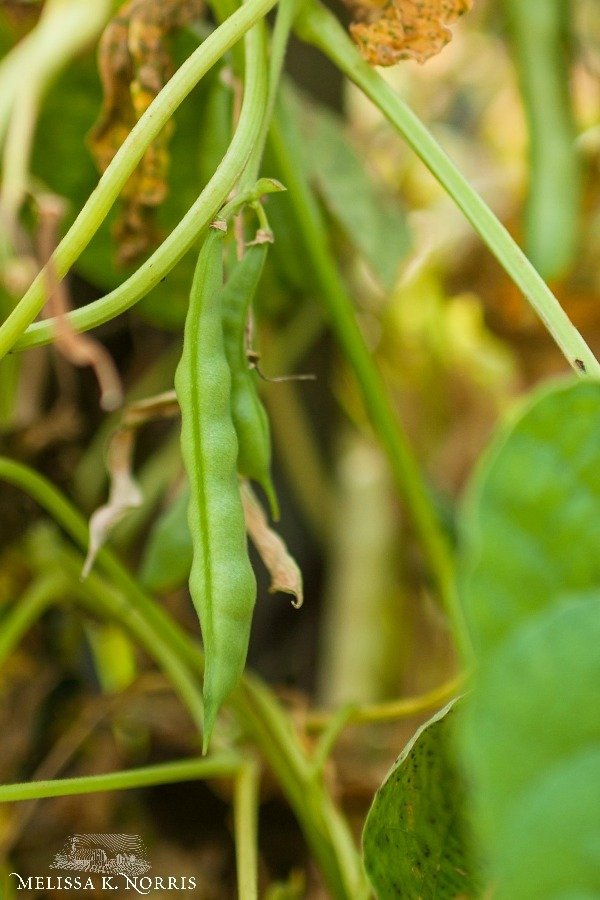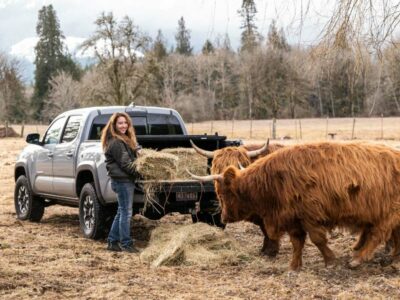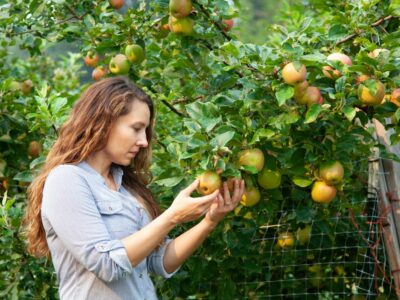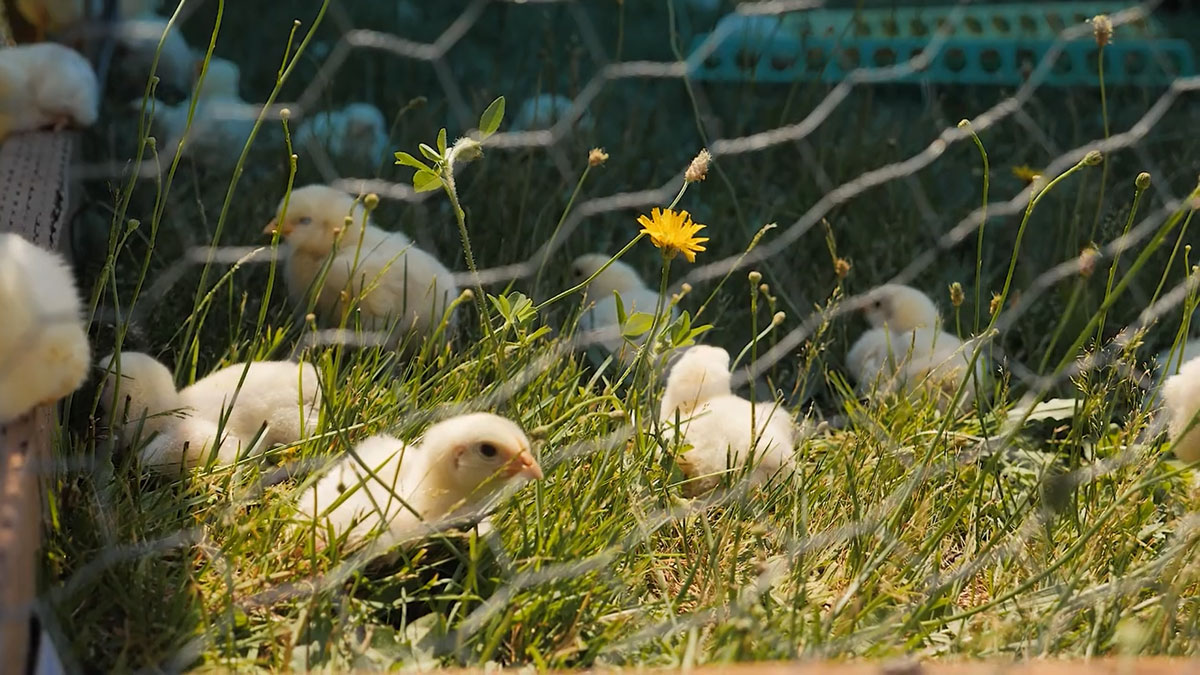Learn when to pick pole beans and all about growing my absolute favorite type of bean. Let’s take a look at why I recommend growing pole beans for your family, including the best methods to use as you grow them, which seeds to save, and how to know when to pick pole beans in your garden.
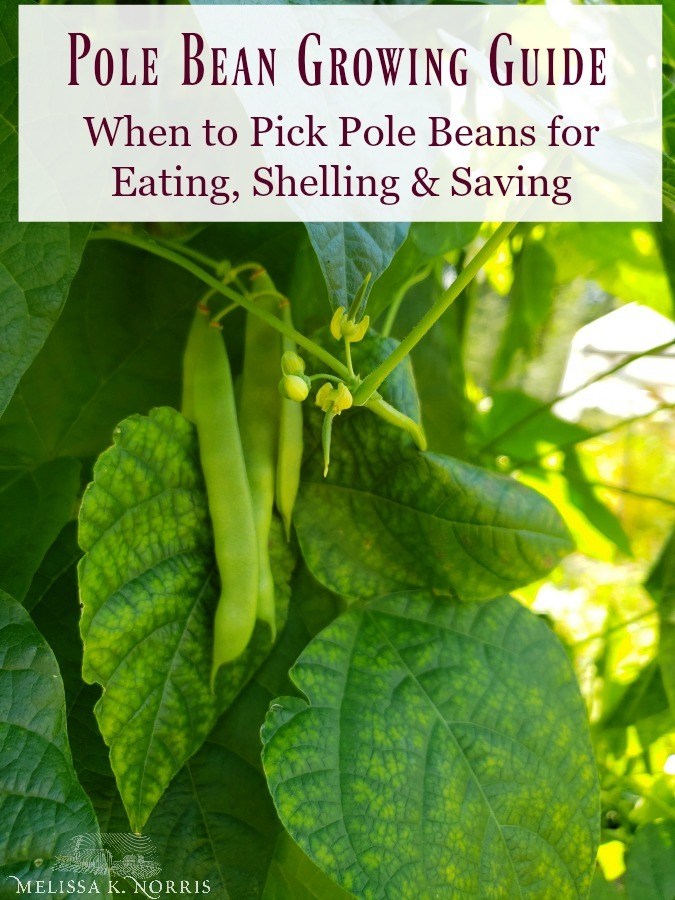
Listen in below to the full podcast, Episode #192 How to Grow (and When to Pick) Pole Beans, of the Pioneering Today Podcast, where we don’t just inspire you, but give you the clear steps to create the homegrown garden, pantry, kitchen and life you want for your family and homestead.
I get a ton of questions about growing pole beans. If you haven't watched my video about how my family has been raising and seed-saving a variety called Tarheel green pole beans for over a hundred years, you definitely want to catch that! Today, I’ll answer common questions about how I grow beans, tips for seed saving, and when to harvest pole beans.
Why Plant Pole Beans?
If you have minimal gardening space and you want to maximize your harvest, I highly recommend a pole bean variety. Pole beans have the benefit of a large harvest for the same amount of space. Even though I live on quite a bit of acreage, I still like to maximize the space I have. The more I can grow in a smaller space, the less work it is for me. In one of my earlier videos, I show you how to construct a pole bean teepee. Be sure to watch that if you want to see how we construct our bean trellises at planting time.
Bush Beans vs. Pole Beans: Different Harvests
Here’s a question I get often: “I've always planted bush beans before. Is there anything I need to know about growing and harvesting pole beans that may be different?” One of the major differences between bush beans and pole beans is how they mature. Pole beans grow six to eight feet tall if they've got a structure to climb, and the blossoms will form and begin to produce beans at the base of the plant weeks before you get a harvest from the top. This is one of the reasons pole beans are so prolific. Your harvest starts down low early on, but as your plants grow they will produce more and more blossoms and beans.
Troubleshooting: Blossoms but No Beans
Another common question I hear about beans has to do with blossoms that aren’t productive. If you have a lot of flowers but those blossoms are not turning into beans, what's going on? Usually unproductive pole bean blossoms mean that it's simply too hot. Beans are self-pollinating, so each blossom contains both female and male parts of the plant. This means that they have the capability to pollinate themselves before the blossom even opens and forms a bean. Blossoms without beans don’t indicate a pollination issue. Instead, it’s typically because beans don't like really hot temperatures.
Heat and Frost: No Friends to Beans
If you're experiencing daytime temperatures of 90 degrees Fahrenheit (or even higher) for more than a few days at a time, that's usually the reason that your blossoms are not forming fruits. You don’t need to worry! Just keep the plants watered so they don’t dry out. Depending on where you live, August can bring high temperatures that can stunt bean harvests. Once those daytime temperatures start to fall, you will see new blossoms form and your harvest can begin.
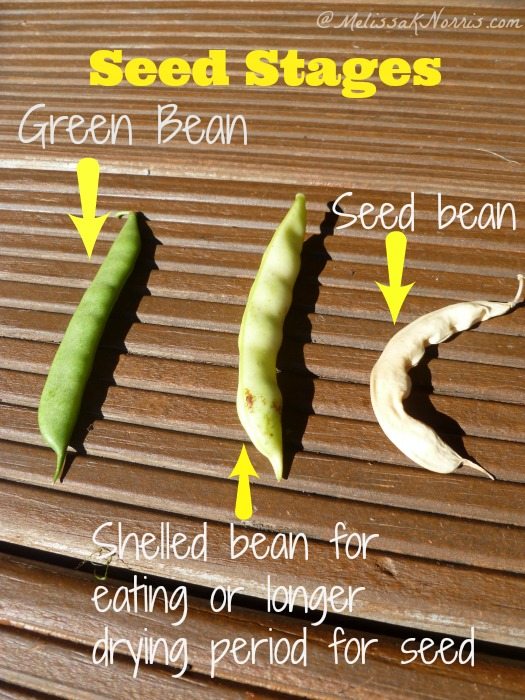
If you live in a really hot southern climate, you may want to adjust your planting time and try to use your beans and pea plants as a fall crop so they're not going through the extreme heat of summer. Of course, this will definitely depend on your gardening zone and when you get frost. Where I live, beans are a warm weather plant because they are not going to survive any type of frost. As soon as you have a hard frost, it will wipe them out. But if you live in warmer areas where you don't really get a frost, you may consider growing pole beans in the milder fall and winter months.
When to Pick Pole Beans for Eating, Shelling and Saving
I’m often asked when to pick pole beans, for eating, shelling, and saving. This is a great practical question. When you are harvesting pole beans as a fresh eating bean, you want the bean to still be fairly smooth. The beans will begin to show some lumpiness where the beans inside the pod are beginning to form, but they aren’t bloated or huge. Another test is to snap the bean and see if it’s crisp. Eating beans should snap right in two, without stringing them first. If they snap right away, without being rubbery or limp, they are perfect to eat fresh.
When you want to use pole beans for shelling, you’ll look for pods that are becoming more lumpy and swollen. Of course, this means that the bean inside is more mature and is larger. To check the beans, remove the string and open the pod. As you look at the bean inside, check it for size and color. Good shelling beans will typically be more white in color, as opposed to pale green. A small or greenish bean means they are still early and should be left to mature a little longer. As the beans mature, they move from bright green to pale green, yellow, and finally white. Once the beans are large and white, they are ideal for shelling and using like any other white bean (such as navy beans).
If you want pole beans for seed-saving, let them develop on the vine until they're even more bloated than for shelling. The outside part of the bean will become pale green, yellow, and then all the way white. If your conditions aren’t too moist, you can leave pods on the plant for this process. As long as beans aren’t falling or getting drenched in heavy rains, allow them to shrivel up and dry on the vine. That is ideal for your seed saving stage. As we get closer to seed saving time here on our homestead, I will make a video so you can actually see what it looks like.
Family Heritage: 100-Year-Heirloom Tarheel Green Pole Beans & a Bonus for You
I hope this post answers some of your questions about ideal growing conditions and when to pick pole beans. Be sure to watch this video where I shared my family's story of seed saving a particular strain of beans for over a hundred years, throughout five generations. Probably the most common question I get asked is where readers and subscribers can get some of our family’s bean seeds. Unfortunately, the certification and laws required for selling seeds in Washington state are simply too much for our small operation. I just grow them for our home use and having a little bit extra.
However, there is a way you can get some of my bean seeds! All you have to do is become a member of the Pioneering Today Academy. We're not always open for new members, so if you visit the page when we're not enrolling, just go ahead and submit your name and email to be added to the notification list for the next enrollment period. Even if it’s not immediately available, you'll be able to check out what the Academy is and everything that it offers. As a bonus, in the springtime I send starter seed packets to all current members of the Pioneering Today Academy.
Lessons inside the academy teach you how to grow your own fruits and vegetables organically, and I also have a complete seed saving course. I can’t provide seeds to everyone who wants them. I don't have the volume and there are many different laws to navigate when it comes to selling seeds. But the most important reason I don’t sell our family pole bean seeds is my hope that everyone who uses them also saves them correctly. This will allow you to pass them on to generations in your family, for years and years to come.
Register Now for Organic Gardening Workshops
If you want more information on growing your own fruits and vegetables, subscribe to my YouTube channel and be sure to register for my upcoming organic gardening workshops. We are going to be covering every aspect of organically and naturally growing your own fruits and vegetables at home, including ways to save time and increase your yield. Registration is totally free, and by joining the early bird wait list you will have access to exclusive, amazing things. Enter your email here to register today!
Other Articles You May Like
- How to Can Green Beans the Easy Way – Raw Pack
- Leather Britches Green Beans (200-Year-Old Preservation Method)
- How to Cook Leather Britches Green Beans
- Green Bean Casserole – From Scratch
- How to Plant and Grow Potatoes (In Containers or the Ground)
- How to Grow Mushrooms at Home
- How to Plant Garlic (Fall Garlic Planting)
- Growing Onions From Seed
- How to Grow Tomatoes
- How to Plant Strawberries- 5 Tips to Success
- How to Grow Swiss Chard in your Fall Garden
- How to Grow and Plant Beets
